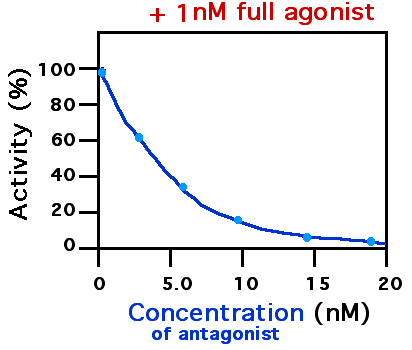|
A-967079
A-967079 is a drug which acts as a potent and selective antagonist for the TRPA1 receptor. It has analgesic An analgesic drug, also called simply an analgesic (American English), analgaesic (British English), pain reliever, or painkiller, is any member of the group of drugs used to achieve relief from pain (that is, analgesia or pain management). It ... and antiinflammatory effects and is used in scientific research, but has not been developed for medical use. References Fluoroarenes {{pharm-stub ... [...More Info...] [...Related Items...] OR: [Wikipedia] [Google] [Baidu] |
TRPA1
Transient receptor potential cation channel, subfamily A, member 1, also known as transient receptor potential ankyrin 1, TRPA1, or The Wasabi Receptor, is a protein that in humans is encoded by the ''TRPA1'' (and in mice and rats by the ''Trpa1'') gene. TRPA1 is an ion channel located on the plasma membrane of many human and animal cells. This ion channel is best known as a sensor for pain, cold and itch in humans and other mammals, as well as a sensor for environmental irritants giving rise to other protective responses (tears, airway resistance, and cough). Function TRPA1 is a member of the transient receptor potential channel family. TRPA1 contains 14 N-terminal ankyrin repeats and is believed to function as a mechanical and chemical stress sensor. One of the specific functions of this protein studies involves a role in the detection, integration and initiation of pain signals in the peripheral nervous system. It can be activated at sites of tissue injury or sites of infl ... [...More Info...] [...Related Items...] OR: [Wikipedia] [Google] [Baidu] |
Antagonist (pharmacology)
A receptor antagonist is a type of receptor ligand or drug that blocks or dampens a biological response by binding to and blocking a receptor rather than activating it like an agonist. Antagonist drugs interfere in the natural operation of receptor proteins.Pharmacology Guide: In vitro pharmacology: concentration-response curves " '' GlaxoWellcome.'' Retrieved on December 6, 2007. They are sometimes called blockers; examples include alpha blockers, |
Analgesic
An analgesic drug, also called simply an analgesic (American English), analgaesic (British English), pain reliever, or painkiller, is any member of the group of drugs used to achieve relief from pain (that is, analgesia or pain management). It is typically used to induce cooperation with a medical procedure. Analgesics are conceptually distinct from anesthetics, which temporarily reduce, and in some instances eliminate, sensation, although analgesia and anesthesia are neurophysiologically overlapping and thus various drugs have both analgesic and anesthetic effects. Analgesic choice is also determined by the type of pain: For neuropathic pain, traditional analgesics are less effective, and there is often benefit from classes of drugs that are not normally considered analgesics, such as tricyclic antidepressants and anticonvulsants. Various analgesics, such as many NSAIDs, are available over the counter in most countries, whereas various others are prescription drugs owi ... [...More Info...] [...Related Items...] OR: [Wikipedia] [Google] [Baidu] |
Antiinflammatory
Anti-inflammatory is the property of a substance or treatment that reduces inflammation or swelling. Anti-inflammatory drugs, also called anti-inflammatories, make up about half of analgesics. These drugs remedy pain by reducing inflammation as opposed to opioids, which affect the central nervous system to block pain signaling to the brain. Nonsteroidal anti-inflammatory drugs Nonsteroidal anti-inflammatory drugs (NSAIDs) alleviate pain by counteracting the cyclooxygenase (COX) enzyme. On its own, COX enzyme synthesizes prostaglandins, creating inflammation. In whole, the NSAIDs prevent the prostaglandins from ever being synthesized, reducing or eliminating the inflammation and resulting pain. Some common examples of NSAIDs are aspirin, ibuprofen, and naproxen. The newer specific COX-inhibitors are not classified together with the traditional NSAIDs, even though they presumably share the same mode of action. On the other hand, there are analgesics that are commonly associate ... [...More Info...] [...Related Items...] OR: [Wikipedia] [Google] [Baidu] |

